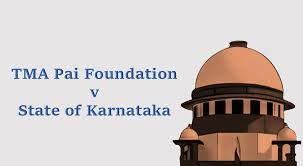SC Mandates Uniformity in Compensatory Afforestation Measures
- ByAdmin --
- 02 Jun 2025 --
- 0 Comments
The Supreme Court of India has consistently emphasized the necessity for robust environmental conservation mechanisms. Its recent directive mandating uniformity in compensatory afforestation measures marks a pivotal moment in the nation’s environmental jurisprudence. This decision holds significant implications for ecological balance, forest governance, and the implementation of existing legal frameworks.
Background of Compensatory Afforestation
Compensatory afforestation arises as a crucial requirement under the Forest (Conservation) Act, 1980, which aims to conserve forest resources and regulate the diversion of forest land for non-forest purposes. Under Section 2 of the Act, any project that involves deforestation must provide alternative afforestation measures. This ensures that the environmental loss is mitigated through the restoration of forest cover.
Despite these measures, the lack of uniform guidelines and disparate implementation across states have led to challenges in achieving the intended outcomes. This inconsistency has been a cause of concern, leading to inadequate ecological compensation for diverted forests.
Supreme Court's Directive: Key Highlights
The apex court’s decision aims to streamline afforestation efforts. Here are the critical points from the directive:
- Standardized Guidelines: The Court has directed the Ministry of Environment, Forest and Climate Change (MoEFCC) to formulate uniform guidelines for compensatory afforestation applicable nationwide. This will address disparities in the quality and scale of afforestation efforts across states.
- Strengthening Monitoring Mechanisms: To ensure accountability, the Court emphasized the establishment of robust monitoring systems for assessing the progress and outcomes of afforestation projects.
- Role of CAMPA: The Compensatory Afforestation Fund Management and Planning Authority (CAMPA), established under the Compensatory Afforestation Fund Act, 2016, will play a central role in implementing and monitoring afforestation projects. The Court underscored the need for better utilization of CAMPA funds.
- Adherence to Forest Rights Act, 2006: The directive reiterates that compensatory afforestation must respect the rights of indigenous and tribal communities under the Scheduled Tribes and Other Traditional Forest Dwellers (Recognition of Forest Rights) Act, 2006. This ensures that afforestation efforts do not infringe upon their livelihoods and traditional practices.
- Environmental Impact Assessment (EIA): The Court highlighted the need to integrate compensatory afforestation measures within the broader framework of Environmental Impact Assessments, thereby ensuring a comprehensive approach to mitigating ecological damage.
Legal and Constitutional Underpinnings
The Supreme Court’s directive is grounded in several legal and constitutional principles:
- Article 21: The right to a clean and healthy environment is intrinsic to the fundamental right to life guaranteed under Article 21 of the Constitution.
- Article 48A: The directive principles mandate the State to protect and improve the environment and safeguard forests and wildlife.
- Public Trust Doctrine: The Court’s decision reinforces the principle that natural resources, including forests, are held in trust by the State for the benefit of the public.
- Doctrine of Sustainable Development: This directive aligns with the broader legal principle of sustainable development, balancing ecological conservation with economic growth.
Implications of the Directive
The Supreme Court’s mandate is expected to have far-reaching consequences:
- Improved Forest Management: Uniformity in compensatory afforestation will lead to better forest governance and restoration of degraded ecosystems.
- Enhanced Accountability: The emphasis on monitoring mechanisms ensures transparency and accountability in the implementation of afforestation projects.
- Community Participation: Recognizing the rights of forest-dwelling communities fosters inclusive environmental policies.
- Strengthening Federal Cooperation: A nationwide guideline necessitates greater coordination between the central and state governments, ensuring seamless implementation.
Challenges Ahead
While the directive is a welcome step, several challenges remain:
- Capacity Building: States may require additional resources and training to implement uniform guidelines effectively.
- Conflict of Interests: Balancing developmental needs with ecological conservation often leads to conflicts.
- Monitoring and Enforcement: Ensuring stringent monitoring across diverse geographical terrains poses logistical challenges.
Conclusion
The Supreme Court’s directive mandating uniformity in compensatory afforestation measures is a landmark decision that reaffirms India’s commitment to environmental conservation. By addressing inconsistencies and reinforcing accountability, the directive lays the groundwork for sustainable forest management. However, its success will depend on collaborative efforts by the judiciary, executive, and civil society to overcome the associated challenges and ensure effective implementation.









































































































































































































































































































































































































































































































































































































































































































































































































































































































































0 comments